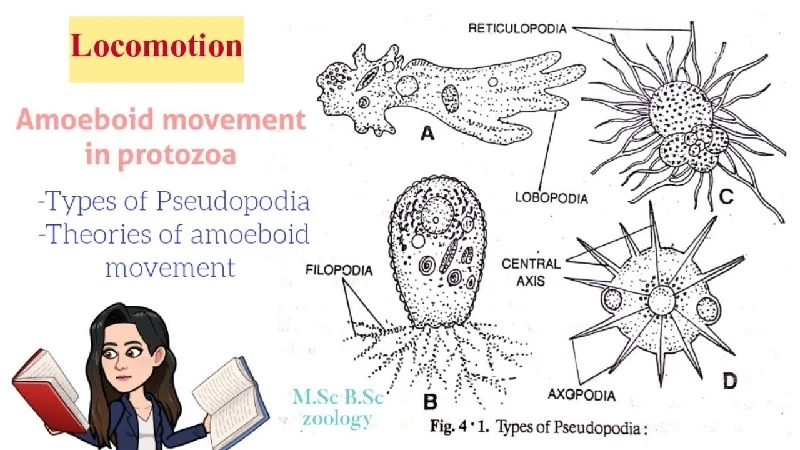Introduction to Amoeba
The amoeba is one of the most fascinating microorganisms observed in nature. It belongs to the country Protista and is characterised by using its unicellular shape and irregular shape. Amoebas are discovered in freshwater, soil, or even inside animals. They carry out all essential features like motion, respiratory, excretion, and vitamins with just a single cellular.
In this article, we’ll discover in-intensity how an amoeba obtains its food, what procedure is worried, and how it digests it. We’ll additionally examine its feeding system with other unicellular organisms and listing interesting statistics in a based format.
Table of Contents
What Type of Organism is an Amoeba?
Classification and Structure
| Feature | Description |
| Kingdom | Protista |
| Phylum | Amoebozoa |
| Structure | Unicellular |
| Movement | Pseudopodia |
| Nutrition Type | Holozoic (heterotrophic) |
| Habitat | Freshwater, moist soil, human intestine (e.g. Entamoeba histolytica) |
Amoebas lack a fixed shape and use pseudopodia, or false toes, to transport and capture meals.
How Does an Amoeba Obtain Its Food?
Step-via-Step Process of Feeding in Amoeba
Amoeba obtains its meals using the system called phagocytosis. Here’s a step-by means of-step breakdown:
- Detection of Food Particle:
- Amoeba detects nearby meals (e.G., micro organism or algae) the use of chemical receptors on its floor.
- Movement Toward Food:
- It acts toward the meals by means of extending pseudopodia, a movement called amoeboid motion.
- Engulfing the Food:
- The pseudopodia surround the meal particle and enclose it, forming a food vacuole.
- Digestion:
- Digestive enzymes are secreted into the vacuole to wreck down the meals.
- Absorption:
- The digested vitamins are absorbed into the cytoplasm.
- Egestion:
- Undigested waste is removed via the mobile membrane.
Key Terms Explained
| Term | Meaning |
| Phagocytosis | Ingestion of solid food by surrounding it |
| Pseudopodia | Temporary projections used for movement and feeding |
| Food Vacuole | A sac-like structure that stores ingested food |
| Enzymes | Proteins that help digest food |
Why is Amoeba’s Feeding Called Holozoic Nutrition?
Holozoic vitamins involve ingestion, digestion, and egestion much like humans. Amoeba’s mode of nutrition is classified as holozoic because:
- It ingests solid food particles.
- Performs intracellular digestion in vacuoles.
- Eliminates undigested waste.
Difference Between Amoeba and Other Organisms
+————————+
| Food Particle Near |
+————————+
↓
[ Amoeba Extends Pseudopodia ]
↓
[ Food Enclosed → Vacuole Formed ]
↓
[ Digestion via Enzymes ]
↓
[ Nutrient Absorption ]
↓
[ Waste Expelled ]
Importance of Studying Amoeba’s Feeding
Studying how an amoeba eats offers precious insights:
- Early Evolution: Shows how early organisms adapted to survive.
- Health Relevance: Pathogenic amoebas (e.G. Entamoeba histolytica) can infect human intestines.
- Biology Education: Useful for know-how cellular-level digestion.
Interesting Facts About Amoeba’s Feeding
- Amoeba can devour organisms larger than itself via increasing its pseudopodia.
- It can survive without meals for numerous days via entering a dormant cyst shape.
- It suggests selective feeding, warding off non-nutritive particles.
- The size of a food vacuole depends on the size of the prey.
- Amoeba’s feeding is inspired through temperature and pH of water.
Table – Key Data About Amoeba’s Feeding
| Parameter | Value |
| Feeding Method | Phagocytosis |
| Organelles Involved | Pseudopodia, food vacuole |
| Type of Nutrition | Holozoic |
| Type of Digestion | Intracellular |
| Main Enzymes | Proteases, amylases |
| Nutrient Absorption | Through cytoplasm |
| Excretion Method | Cell membrane (diffusion) |
Real-Life Applications
- Medical Science: Helps in know-how amoebic infections.
- Microbiology Research: Used in lab experiments to have a look at mobile function.
- Education: A traditional instance in school-degree biology for mobile nutrients.
Summary
Amoebas gain food via phagocytosis, a technique in which they surround and engulf meals debris the use of their pseudopodia. This unmarried-celled organism digests food internal food vacuoles, making nutrients available for electricity and increase. Understanding the amoeba’s feeding procedure facilitates us to learn about primitive lifestyles and biological evolution in unicellular organisms.
Conclusion
The amoeba, though a microscopic and primitive organism, showcases an noticeably efficient and captivating feeding mechanism. Through phagocytosis, it engulfs and digests food internally, much like the technique seen in complex multicellular organisms. Its observation plays a crucial position in cellular biology, evolutionary studies, or even medical technology.
FAQs About Amoeba Feeding
What are pseudopodia and what is their characteristic in feeding?
Pseudopodia are brief finger-like projections that assist amoeba pass and engulf meals thru phagocytosis.
How is the food digested inner amoeba?
Food is digested inside a food vacuole using digestive enzymes released by means of the cytoplasm.
Can an amoeba live to tell the tale without meals?
Yes, below strain or meal scarcity, it is a cyst to live on in a dormant situation until food becomes to be had.
How does amoeba range from paramecium in feeding?
Amoeba uses pseudopodia for engulfing food, even as paramecium uses cilia to comb meals into its oral groove.
